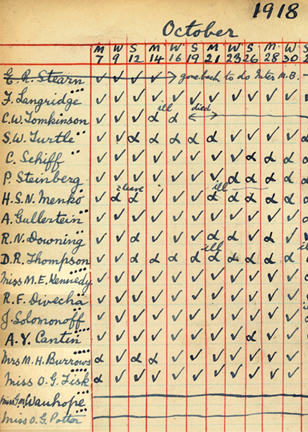| Thematic History | |||||
| Women at Queen Mary Online: a virtual exhibition | |||||
 |
|||||
| In this section: | Impact of the Great War | ||||
|
> 1850-1901: > 1902-1913: > 1914-1945: > 1946-1959: > 1960-present: |
|||||
|
During the First World War, demand for doctors increased. The majority of doctors were men, many of whom were on active service. Although the 1876 Medical Act allowed all examining authorities to grant registration to physicians regardless of gender, there were only 200 trained women doctors in the whole of Britain by 1900. And up until 1914, the opportunities for women to train in the medical profession remained limited. The shortage of trained medical staff during the First World War persuaded many London Medical Colleges to rethink their admissions policies. Twelve London Hospital Schools accepted a limited number of women as medical students, including The London Hospital Medical College. St Bartholomew's Hospital Medical College continued to refuse admission to women.
Dorothy Stuart Russell, Olive Gwendoline Potter, Dorothy Gibson, Gladys Wauchope, and Dorothy Armitage Waterfield were all admitted to study medicine at The London towards the end of the First World War. However, even where women were admitted, prejudice remained. This resistance continued after the conclusion of the war and the admission of women proved only a temporary reprieve.
H.M. Turnbull, Professor of Pathology at The London Hospital Medical College, used his attendance record book (above, left) to meticulously rank students’ performance with a series of dots. The more dots next to the student’s name, the better the student’s performance. On the page above, from October 1918, Misses Wauchope, Kennedy, Fisk, Burrows and Potter are listed. Gladys Wauchope was amongst the first women to qualify during the period in which women were admitted to study medicine towards the end of the First World War. |
| << previous | Explore the Thematic History |
|


